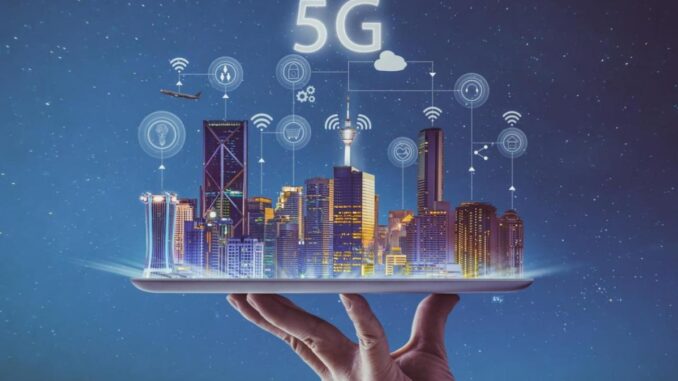
5G-powered Vehicle-to-Everything (V2X) communication is a revolutionary technology that leverages the high-speed, low-latency, and massive connectivity capabilities of 5G networks to enable real-time communication between vehicles and everything in their environment.
This includes other vehicles, infrastructure, pedestrians, and cloud services, fundamentally transforming how vehicles interact with the world around them.









Key Features of 5G-Powered V2X Communication
Ultra-Low Latency:
5G reduces communication latency to as low as 1 millisecond, enabling near-instantaneous data exchange. This is crucial for safety-critical applications like collision avoidance, where even a slight delay could mean the difference between a safe maneuver and an accident.
High Data Rates:
The high data throughput of 5G allows for the transmission of large amounts of data quickly, supporting high-definition maps, real-time video feeds, and detailed sensor information. This is essential for autonomous vehicles that need to process vast amounts of data to make driving decisions.
Massive Connectivity:
5G can connect a vast number of devices simultaneously, which is particularly important in urban environments where many vehicles, pedestrians, and infrastructure components need to communicate with each other in real time.
Reliability:
5G networks are designed for high reliability, ensuring that critical V2X communications are delivered consistently and without interruption. This reliability is essential for maintaining safety and coordination in traffic environments.
Applications of 5G-Powered V2X Communication
Autonomous Vehicles:
Autonomous vehicles rely on V2X communication to receive real-time data from other vehicles, infrastructure, and cloud services. This information helps them navigate complex environments, make informed decisions, and interact safely with other road users.
Traffic Management:
5G-powered V2X enables dynamic traffic management systems that can adjust traffic signals, manage congestion, and provide real-time updates to drivers. This leads to smoother traffic flow, reduced travel times, and lower emissions.
Enhanced Safety Features:
Vehicles can use V2X communication to share information about their speed, location, and intended maneuvers with other vehicles and infrastructure. This enables advanced safety features such as collision avoidance systems, emergency vehicle alerts, and pedestrian detection.
Smart Infrastructure:
Infrastructure components like traffic lights, road signs, and toll booths can communicate with vehicles using V2X, providing them with real-time information about road conditions, construction zones, and traffic patterns. This helps drivers make better decisions and reduces the risk of accidents.
Platooning:
In commercial transportation, V2X allows for platooning, where multiple trucks or vehicles travel closely together in a coordinated formation. This reduces air resistance, saves fuel, and improves road capacity. V2X communication ensures that vehicles in a platoon can safely coordinate their speeds and movements.
Advantages of 5G-Powered V2X Communication
Improved Road Safety:
By enabling real-time communication between vehicles and their surroundings, 5G-powered V2X reduces the risk of accidents and enhances overall road safety.
Increased Efficiency:
V2X communication allows for more efficient traffic management, reducing congestion and improving the flow of vehicles. This leads to faster travel times and lower fuel consumption.
Support for Autonomous Driving:
V2X is a critical component of autonomous driving systems, providing the real-time data needed for vehicles to navigate safely and efficiently without human intervention.
Enhanced User Experience:
With real-time updates on traffic conditions, hazards, and optimal routes, drivers can enjoy a smoother, less stressful driving experience.
Challenges and Considerations
Infrastructure Deployment:
The widespread adoption of 5G-powered V2X requires significant investment in infrastructure, including the deployment of 5G networks and the integration of V2X technology into vehicles and traffic systems.
Standardization:
Global standards for V2X communication need to be established to ensure interoperability between different vehicles and systems, which is crucial for the technology’s success.
Security and Privacy:
Ensuring the security of V2X communications is vital, as these systems handle sensitive data related to vehicle movements and personal information. Robust encryption and cybersecurity measures are needed to protect against hacking and data breaches.
Future of 5G-Powered V2X Communication
As 5G networks continue to expand globally, the capabilities of V2X communication will grow, enabling new applications and services that enhance the safety, efficiency, and intelligence of transportation systems. The integration of V2X with other emerging technologies, such as AI, machine learning, and edge computing, will further accelerate the development of smart, connected vehicles and infrastructure, paving the way for a new era of transportation.
In summary, 5G-powered V2X communication is a foundational technology for the future of mobility, providing the real-time connectivity needed to support autonomous vehicles, smart cities, and advanced traffic management systems. Its potential to improve safety, efficiency, and the overall driving experience makes it a key enabler of the next generation of transportation innovation.

Leave a Reply